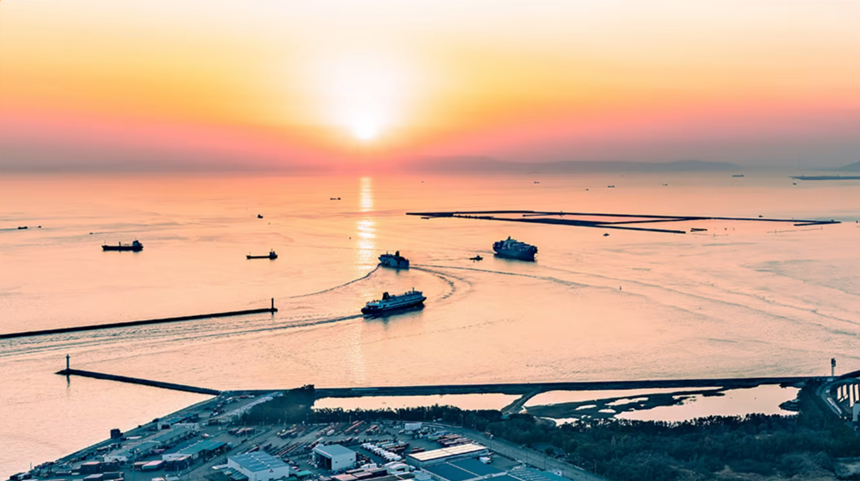
Hydrogen HOPE for the Nordics – shipping as a frontrunner
The project Hydrogen fuel cells solutions in Nordic shipping (HOPE) within the programme Nordic Maritime Transport and Energy Research has published a project summary, which clarifies how regional shipping in…
The project Hydrogen fuel cells solutions in Nordic shipping (HOPE) within the programme Nordic Maritime Transport and Energy Research has published a project summary, which clarifies how regional shipping in the Nordic region can transition to become fossil-free by means of hydrogen based marine solutions. The report includes main findings and policy recommendations for transitioning to hydrogen fuel cells solutions. In the end of August, the HOPE project was presented at Donsö Shipping Meet in Gothenburg.
Read the HOPE project summary here

What is the potential role of hydrogen-based marine solutions in reducing the Nordic GHG emissions?
The Nordic region will become the most sustainable and integrated region in the world by 2030. This vision includes an aim for carbon-neutrality, and maritime transportation is one of the key remaining sectors to be decarbonized in the Nordics. In this context, the introduction of alternative low-carbon fuels is a necessary complement to energy efficiency improvements for reducing greenhouse gas (GHG) emissions (as well as other harmful emissions), as other measures are not sufficient. There are several maritime fuel options, which have varying technological readiness levels but also large potential to represent zero carbon fuels. Therefore, it is important to learn more about the possibilities and impacts of hydrogen-based solutions for shipping in the Nordic region.
The HOPE project has addressed how regional shipping in the Nordic region can transition to become fossil-free, by clarifying the potential role of hydrogen-based marine solutions in reducing the Nordic GHG emissions. Hydrogen-based solutions are not yet introduced in large-scale, which is why HOPE has investigated different pathways with emphasis on the use of hydrogen in fuel cells.
Julia Hansson, Project Manager of HOPE, elaborates on the future of hydrogen for a low-carbon and competitive shipping sector in the Nordic countries.
“Even though using hydrogen and fuel cells for a regional ROPAX vessel between the Nordic countries seem technically feasible and has a considerable potential for reducing both GHG emissions and other emissions such as nitrogen oxides (NOx) and particles, this is likely not the top option in the near term for most shipping companies. The reason is that there are several barriers for the introduction of hydrogen in shipping. Sufficient public economic support is needed for Nordic shipping frontrunners willing to take the lead in this area,” says Julia.
She also adds that more insights gained from additional research and early field trials are needed, since the subject of hydrogen for shipping is still immature. Two relevant questions that need further research are “What specific ships should use which fuel and propulsion technology?” and “What economic incentives are the most efficient for sustainable shipping based on hydrogen in the Nordics and at the EU level?”

Main findings and policy recommendations from the HOPE project
Some of the main findings from the HOPE project summary include:
- Emissions of air pollutants and greenhouse gases will decrease significantly upon an implementation of hydrogen as fuel in Nordic shipping. There is a considerable potential for emission reductions both in terms of carbon dioxide, nitrogen oxides, and particulate matter linked to the implementation of hydrogen and fuel cells in Nordic shipping.
- A variety of drivers motivate shipping companies to investigate the adoption of green hydrogen and fuel cells. The most relevant include environmental commitments along with existing and upcoming policies and regulations. A variety of barriers limit the adoption of green hydrogen and fuel cells for shipping. The main barriers are the high costs of the fuel/technology, the lack of fuel infrastructure, the lack of supply of green hydrogen, and the operational challenges for handling hydrogen (mainly in storage and bunkering).
Some of the policy recommendations from the HOPE project summary include:
- A Nordic/regional approach is needed to accelerate the transition toward low and zero-emission shipping. Coordination between the countries, also in terms of policies, will be crucial to avoid fuel/technology silos. A Nordic roadmap with binding commitments for the transition toward low and zero-emission shipping would be key to guarantee that the industries of the Nordic countries move at a similar pace and to avoid delays in the transition of the Nordic shipping industry.
- Economic and regulatory policies are needed to reduce the barriers and to accelerate the adoption of hydrogen and hydrogen for fuel cells for shipping.

